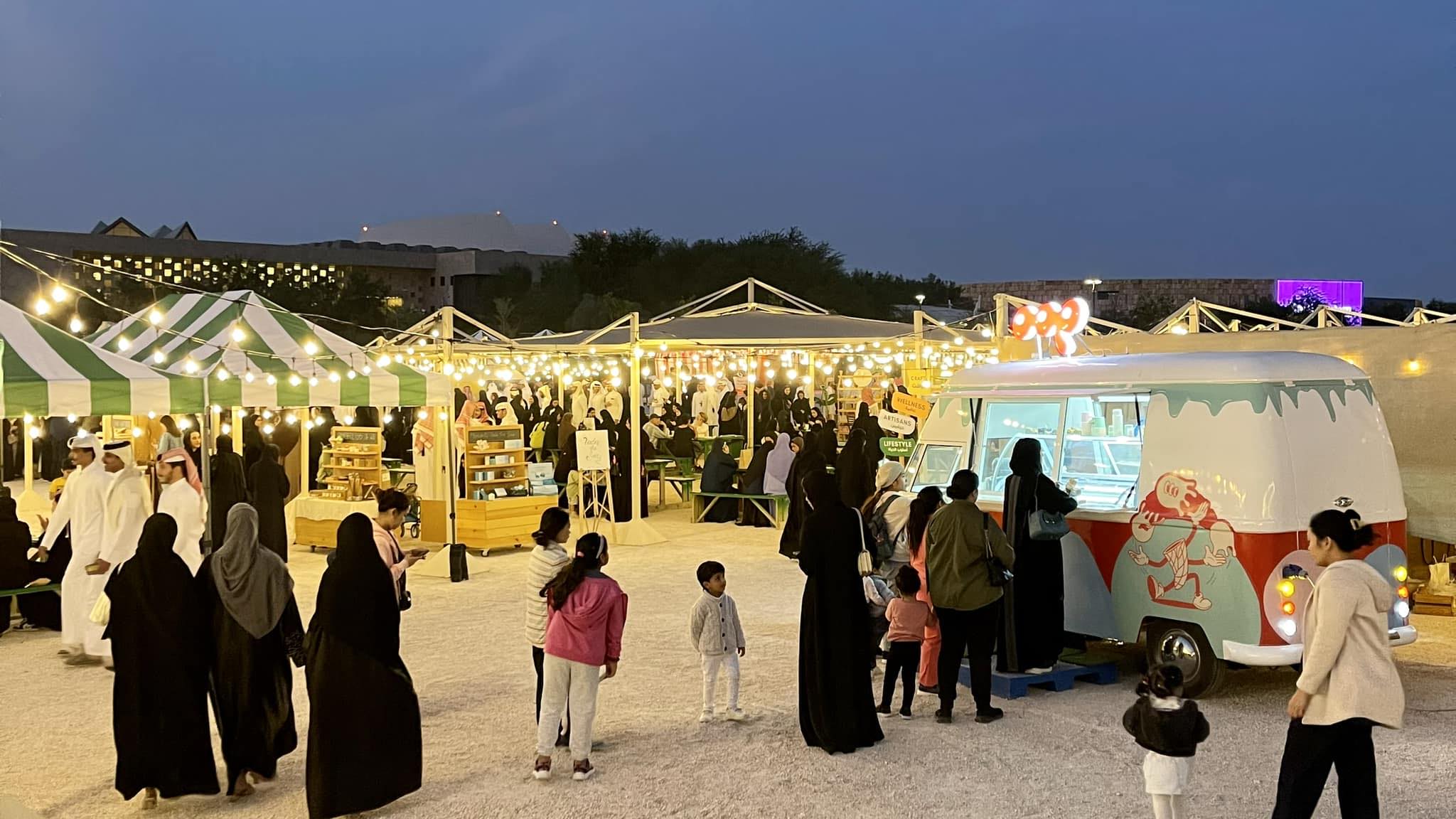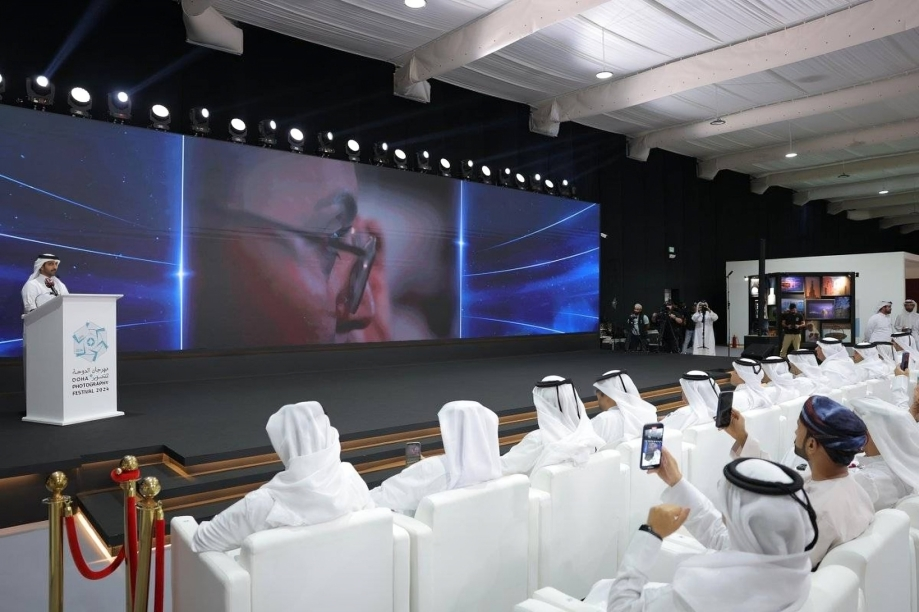
Artwork drawing inspiration from the Holocaust, religion, Disneyland and American politics are the focus of Luc Tuymans’ first solo show in the Middle East, which opened to the public in Qatar today.
The world-renowned Belgian painter is the latest in a series of high-profile artists – including Damien Hirst and Richard Serra – to showcase their work in Doha at Qatar Museums‘ Al Riwaq Gallery, near the Museum of Islamic Art.

The new exhibition, titled Intolerance, is both a retrospective collection, featuring works spanning over 30 years, and a showcase of new work that Tuymans composed specifically for the show.
Speaking to the press Friday, QM’s director of Public Art Jean-Paul Engelen said that the show would help foster “tolerance and (create) a cultural bridge…which (QM) has tried to (do) over the past five years.”
Tuymans, who has previously exhibited at several prestigious galleries worldwide including the MoMA, the Guggenheim and the Tate Gallery, further elaborated on the show’s theme, saying:
“Intolerance implies tolerance, in a very weird way…The entire show is about western image-building, because I am from the West. I’m from a particular region called Flanders, where this image building begun under religion.”
Flanders, a Dutch-speaking area in north of Belgium, and the inspiration for the popular WWI poem “In Flanders Fields,” features prominently as inspiration for many of Tuymans’ works, as does his family’s affiliation with the Holocaust.

At a press preview in 2010, Tuymans revealed that his mother worked in the Dutch resistance and hid refugees, while, paradoxically, two of his father’s brothers had been in the paramilitary Nazi Germany organization, Hitler Youth.
Wall paintings
To mark the show, Tuymans has created a series of five wall paintings, a technique that the artist routinely uses to re-create pieces that should have been part of the show, but were too expensive or cumbersome to transport, or couldn’t be retrieved from their respective galleries and collections.
“It wasn’t easy putting up this show. My assistants and I had to change the sketch up about 50 times, because of the prejudice toward the region (which made it hard to be loaned works).
But still, I wanted to have (these) images because they are important for the show, so I repainted them. They will be destroyed after the show. I have over a 100 of these wall paintings that have been destroyed,” Tuymans said.

The five paintings in various shades of blue cover different subjects.
One depicts the demolition of a building in Chicago in 1995 as cerulean clouds of smoke and debris, while another illustrates a power plant where Israeli forces make their missiles.
A third highlights a section of a press photograph of a meeting between former US Secretary of State Colin Powell and now-deposed Egyptian President Hosni Mubarak before the second war in Iraq.
The remaining paintings focus on a water scene from Tuymans’ home country and on a press photograph from the second Gulf War of Navy Seals at a villa owned by one of the sons of Saddam Hussein.
“I chose the color blue because (it) has to do with the idea of space, but also with the element of the difficulty of remembering things,” he added.
Other prominent works
Aside from the bespoke wall paintings, Tuymans’ Intolerance is seemingly divided into three areas.
Most of the gallery is dedicated to a hodge-podge of paintings focusing on blurry depictions of war, blank spaces and portraits on his signature washed and bleached-out canvases.
The conflict theme is exemplified in a painting called Prisoners of War, which recreates a television image of four prisoners from the Gulf War, who became, according to Tuymans, the face of the bloodshed.

Contrasting these images are two other spaces, whose walls have been painted a dull blue-gray, showcasing pieces with alternative messages.
The Al Riwaq rotunda has been converted into a redacted recreation of a 2008 show titled Forever, The Management of Magic, featuring large-scale paintings in a sort of carousel of skewed imagination.
Of the more prominent paintings in the zone are two depicting the catastrophic opening day of Walt Disney’s legacy, Disneyland, in 1955.
“This was to recreate an environment where you could incarcerate…or steer…fantasy. These are recreations of the very first day when Disneyland opened, and it was a disaster zone. There was a gas leak at the entrance of Alice in Wonderland, the (Disneyland Electric Parade) light turtle collapsed, and more of those things.”
The “dark spaces,” a series of darkened rooms features some of his older work, including source materials and drawings.

The space also features a hanging sphere depicting, among other works, the passion play, traditionally a dramatic presentation depicting the finals days of Jesus Christ, a reimagining of 9/11 as a scene from a paintball arena, and an original in situ sketch of a gas chamber at a German concentration camp.
Tuymans said:
“This is a piece we rarely get…it’s very fragile, and it’s an old piece. It’s made in the beginning of the 80s. It’s made in the gas chamber in (Dachau), on the spot, on the backside of a calendar, with watercolor.
It’s yellowed (now), and in ‘86, I made a painting out of it. This is an important piece because it actually shows you something you can’t see. It shows you horror you can’t see. It has a moral element to it. It shows you how terror can be at random, and can be anything, and (how) its size can differ.”
The zone also features some of the Tuymans’ oldest works, painted on scraps of cardboard, and created at a time when the artist couldn’t afford to buy canvas.
The exhibition is free and open from 10:30am to 5:30pm on Sundays, Mondays and Wednesdays, noon to 8pm on Thursdays and Saturdays, and from 2 to 8pm on Fridays. It is closed Tuesdays.
Thoughts?







